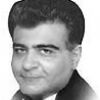Whoever has more tricks, seats will win in Pak
Zardari may emerge as PM-maker as no stable coalition is likely sans the PPP. This would superficially validate the Ek Zardari sub pe bhari' slogan.

With less than a month to polls, predicting the result remains tough. Before Panama, an easy 2018 win was predicted for the PML(N). Basking in CPEC’s glory, it was eyeing its political fruits before the nation got the real fruits. But soon Panama upended CPEC from the national radar.
The change came less from the damage it caused to the PML(N)’s popularity and more from the latter’s visible and invisible foes exploiting the scandal. A series of controversial judicial verdicts against the PML(N) followed. This led to a few defections which picked up after the Senate polls farce. Many think they were spurred by invisible forces. Rumours soon arose “they” wouldn’t allow the PML(N) back in power. Internal cracks created by external attacks hit it too. All this and Nawaz’s likely absence during the polls may depress its voter turnout.
Thus, the chances of the PML(N) forming a strong setup again look low. In 2013, it got 126 seats (before the reserved seats) and crossed the magic figure of 137 easily with independents, the JUI(F), PkMAP and NP. It may not get more than 80 seats now. Some say Nawaz Sharif wants to lose to block Shahbaz Sharif’s rise. But he needs his own PM in order to get a presidential pardon if NAB convicts him.
The PTI got 28 general seats then and may increase its tally to 70-80, the PML(N)’s loss being its gain. Some say even “key” forces don’t want the PTI to get more, to keep it in check. The PPP got 32 seats then and may reach 40 this time, ruling out it leading a federal coalition. This leaves around 75 seats for smaller groups (independents and smaller parties) which together had 85 seats then. Most of them do the bidding of invisible forces and may be united into a fourth force.
So, the PML(N) may need around 60 external seats to reach 137. It could still count on free-minded liberal parties (e.g. PkMAP, NP and ANP) for 10 seats. But if small groups are told to avoid the PML(N), its only option would be giving Zardari legal immunity via the presidency. The idea of running a coalition of 10-plus parties may push it towards the PPP too. But Zardari may not easily forego his anger towards Nawaz.
The PTI too may need an extra 60 seats. It may be easier for the party to woo smaller groups as they may receive the “right go-ahead”. But the idea of a 10-plus parties’ setup will scare it too. Yet, unlike the PML(N), it may not want to invite the PPP, leaving it in a bind. Some say “key” forces also remain wary of making Imran the PM given his maverick ways and Shah Mehmood taking that slot may be their price for roping in smaller groups.
But if the maverick in Imran says no, another Senate-style option would be herding the smaller groups with an elderly, benign prime ministerial nominee in a coalition with the PPP, with Zardari as President. He too may prefer this motley crowd over the PML(N) as he would have more informal powers then. This would leave the odd couple of the PML(N) and PTI to sulk together in the Opposition and fight for the Opposition leader’s slot. But this may hopefully energise both to work together for civilian supremacy.
If the option fails and the smaller groups are being herded with the PTI sans him, Zardari may quickly join a more stable and centrist, but dissident and corrupt coalition with the PML(N), PkMAP, NP and ANP to beat the PTI’s chaotic coalition. However, an institutional coalition may then continuously hound it, sowing instability. Thus, post-poll coalition formation may be tricky and ’90s-type rigging may produce ’50s-type unstable coalitions with often changing PMs. All this can only be avoided if either the PML(N) or PTI wins 100-plus seats, but that looks unlikely.
Who finally wins will depend on exact party seat numbers and tricks up “powerful” sleeves. Zardari may emerge as PM-maker as no stable coalition is likely sans the PPP. This would superficially validate the “Ek Zardari sub pe bhari” (one Zardari is heavy on everyone) slogan. But unluckily he’s heavy on his party too converting it from one winning national polls fairly to one conniving to get the crumbs of power.
So the real winner with a hung Assembly may be invisible forces which have long run politics and prefer pliant regimes over empowered, effective ones. But such a rigged regime may be wobbly. Of the only four Assemblies (1972, 2003, 2008 and 2013) that reached term, three came from largely credible polls. Almost all those facing early ends came from rigged polls (except 1988). So history says an Assembly born of rigged polls may not last the distance. Thus, the epic war between elected and invisible forces will continue, with neither side wresting a decisive win.
By arrangement with Dawn
